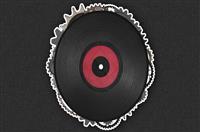
今天无意间在Dickson的数论的历史(1918年,1923年出版),第一卷看到
公元前500年中国古人似乎已经知道 $2^p-2$ 可以被素数 $p$ 整除,例如30可以被5整除。这个事实被费马在1640年重新发现,并推广到一般情况,所谓费马小定理。
我不熟悉数论,包括任何事情,人生已经到了过目就忘的境界,这个阶段的到来不会因为寿命长了而延迟,所以俺不主张延迟退休。家里的书太多了,已经不堪重负、翻不过来了,而网上能下载中文书,例如华罗庚的《数论导引》,基本上被灭绝,为了迎合XX。
所以期待科学网有数学史的研究者,指出真伪。
似乎Dickson是杨振宁父亲杨武之的博士导师。如果是真的,颇为中国古人(注意不等于中国人)骄傲。
PS 书中的注释 Chinese 1: G. Реаnо, Formulaire math., 3, Turin, 1901, p. 96, Jeans.
补充 查了维基的词条
Chinese hypothesis
In number theory, the Chinese hypothesis is a disproven conjecture stating that an integer $n$ is prime if and only if it satisfies the condition that $2^n-2$ is divisible by $n$—in other words, that integer $n$ is prime if and only if $2^nequiv 2 ~text{mod}~ n$. It is true that if $n$ is prime, then $2^nequiv 2 ~text{mod}~ n$ (this is a special case of Fermat"s little theorem). However, the converse (if $2^nequiv 2 ~text{mod}~ n$ then $n$ is prime) is false, and therefore the hypothesis as a whole is false. The smallest counter example is $n=341=11times 31$. Composite numbers $n$ for which $2^n-2$ is divisible by $n$ are called Poulet numbers. They are a special class of Fermat pseudoprimes.
History
Once, and sometimes still, mistakenly thought to be of ancient Chinese origin, the Chinese hypothesis actually originates in the mid-19th century from the work of Qing dynasty mathematician Li Shanlan (1811–1882).[1] He was later made aware his statement was incorrect and removed it from his subsequent work but it was not enough to prevent the false proposition from appearing elsewhere under his name;[1] a later mistranslation in the 1898 work of Jeans dated the conjecture to Confucian times and gave birth to the ancient origin myth.[1][2]
一个错误的翻译




